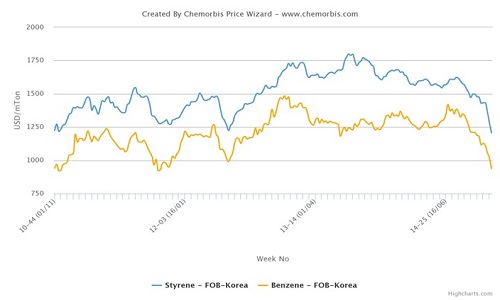North America has witnessed phenomenal growth in Oil supplies and is among the largest contributor to non-OPEC oil supply growth.
However, pipeline bottlenecks have created problems for WTI sweet crude oil making it the cheapest Oil available due to the glut despite Libyan tensions pushing up oil prices globally.
How long will WTI crude oil with delivery point at Cushing, Oklahoma remain the benchmark for the global commodity? It may not last beyond 2014, according to an analysis by Bank of America-Merrill Lynch (BofAML). North American crude oil supplies are surging at a fast pace and US was the largest contributor to non-OPEC oil supply growth in 2010, adding nearly 370,000 b/d, and Canadian oil output increased by 150,000 b/d/. Presently, refineries around Oklahoma are flooded with crude oil and capacities stretched to the limit.
The retention of benchmark status for WTI crude rests on how soon it may be able to build new pipeline capacity to transport Oil as the present system is already stretched. “The refineries in the Midwest PADD2 and in the Rockies PADD 4 regions cannot cope with the growing volumes of crude, and the pipeline system cannot bring all the surplus crude to the Gulf Coast.
The market’s hope seems to rest on two pipelines from Cushing to Texas with capacity exceeding 650 thousand b/d that could come on line by 2013/14. While this additional capacity should help close the WTI-Brent gap, a broader question remains on whether WTI will be a relevant benchmark at all by 2014, BofAML analysis said.
With crude oil flows continuing to grow and refineries struggling to process the soaring volumes, refining margins, as well as the value of storage, have soared around the Midwest. In particular, gasoline and distillate crack spreads have widened to record seasonal levels, BofAML analysis said.On the other hand the refineries processing Brent Crude are not enjoying the same kind of margins. Recent company reports suggest that firms suchas Frontier and Holly that operate refineries in the Midwest have experienced a substantial increase in earnings. Frontier has large heavy crude capabilities at its Cheyenne refinery and direct access to WTI at their El Dorado, Kansas refinery with about 33% of their crude slate coming from WTI. Meanwhile, Holly’s Tulsa, Oklahoma refinery is running over 100 thousand b/d of WTI, representing about 40% of capacity.
Surplus oil in PADD 2 region are being moved to other parts of USA where refining capacitiies are available but they are limited by pipeline supply bottlenecks especially to US Gulf Coast.Similarly, crude oil movements into PADD 4, the Rockies, have accelerated ) towards the end of last year. But refineries around the Rockies are
already operating at very high levels, and we see limited scope for further crude oil movements into PADD 4
With the pipeline system saturated, shippers have moved on to other sources of transport including rail and truck to take advantage of the price differentials
between landlocked WTI and Gulf Coast seaborne grades such as Light Louisiana Sweet and HLS (Chart 17).
“We estimate that the cost of railing oil from Cushing to St James in Texas varies from $7/bbl to $10/bbl, but even there capacity will likely only amount to an estimated 100 thousand b/d, which is still a substantial increase from last year’s estimate of 45 thousand b/d. Trucking oil out of Cushing is an even more expensive endeavour, with the cost per barrel estimated to be another $4/bbl to $5/bbl above railing. With no other alternatives to move crude oil from Cushing to the Gulf Coast, WTI-Brent differentials in the front-end of the curve traded as wide as $16/bbl in recent months,” BofAML analysis said.
With light sweet barrels around Cushing starting to draw, WTI crude oil timespreads have started to compress at a phenomenal speed, even despite the record crude oil inventory levels at Cushing. This suggests that the WTI-Brent spread could follow and that WTI prices could continue to rise into the US driving season. Historically, the relationship between timespreads and WTI-Brent spreads has been very strong, as backwardation at Cushing typically signalled a premium of the North American benchmark over Brent. This relationship, however, has become a bit more murky in recent months, as the glut of crude oil
in the Midwest developed . One potential relief factor is the build out of storage capacity at Cushing, which could tighten timespreads further. Storage capacity at Cushing is currently estimated at 55 million bbl and is expected to grow by 12 million bbl, or 18%, by the end of the year, BofAML analysis added.
Source : www.commodityonline.com







